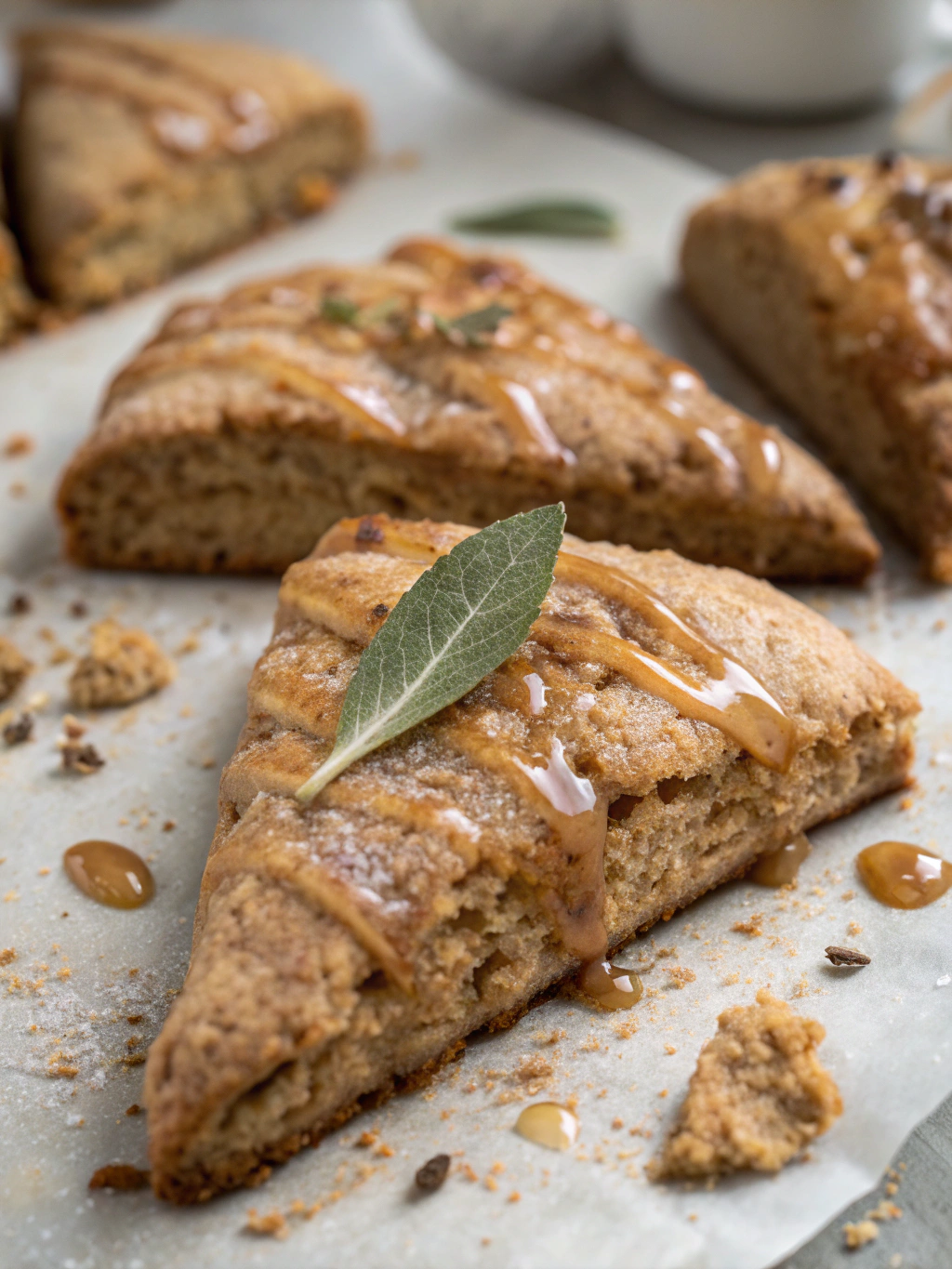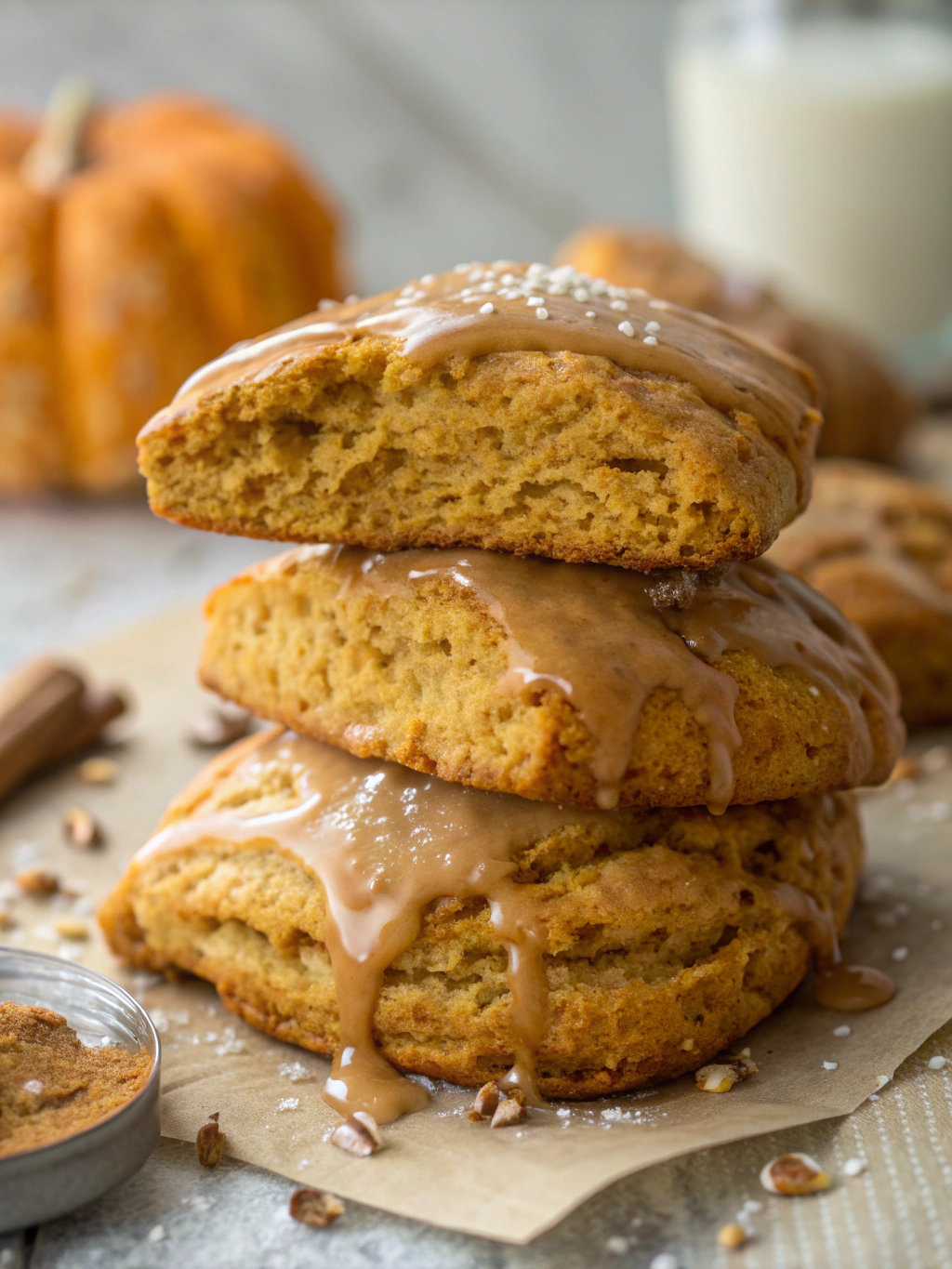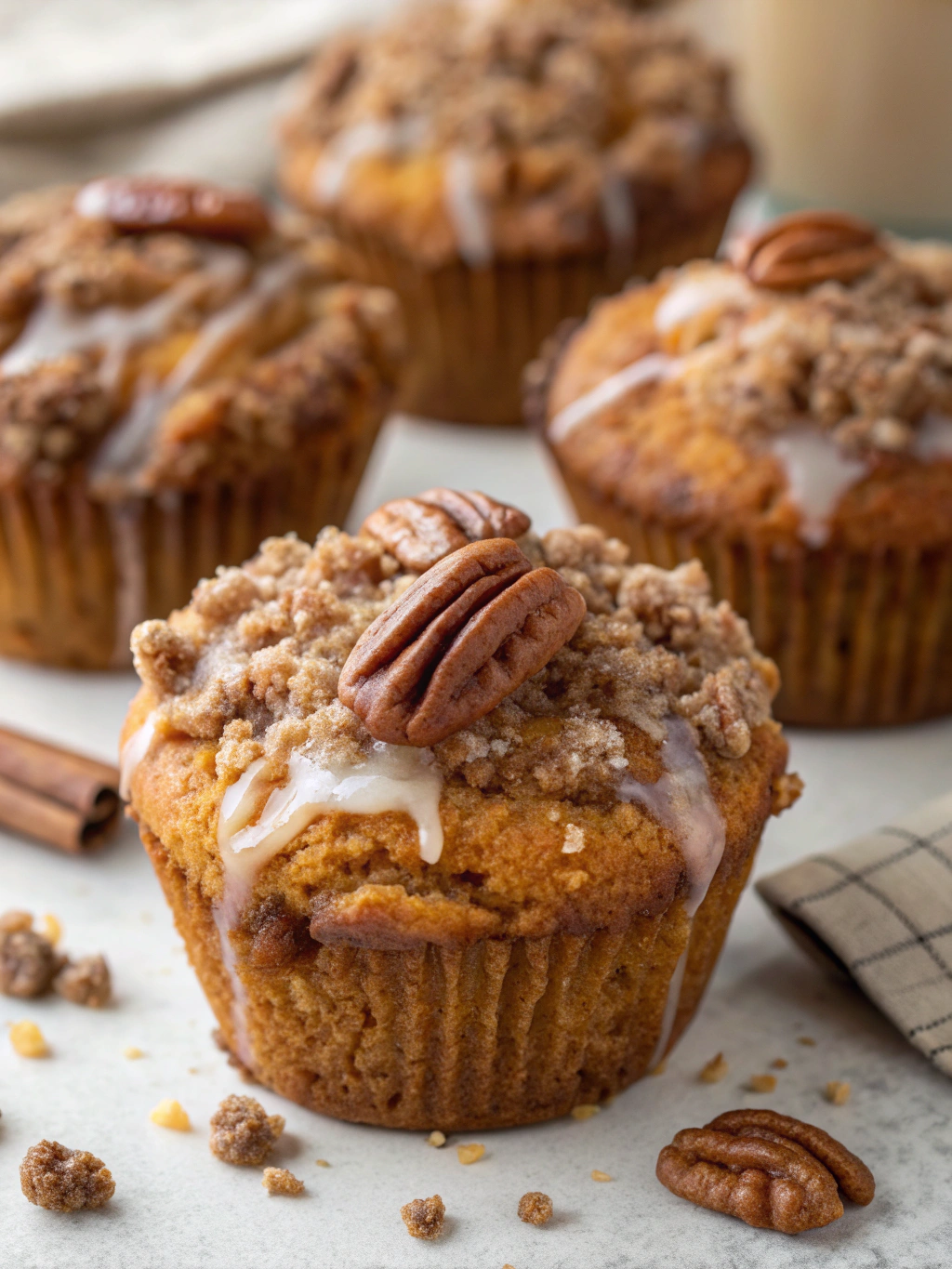New Orleans-Style Beignets: A Taste of the French Quarter at Home
Transport yourself to the heart of New Orleans with these pillowy, golden New Orleans-Style Beignets. These iconic French-inspired pastries are a beloved treat in the Crescent City, known for their light, airy texture and generous dusting of powdered sugar. Perfect for breakfast, dessert, or a sweet snack, these beignets are a must-try for anyone looking to recreate the magic of Café du Monde at home.
The process of making New Orleans-Style Beignets is as rewarding as it is delicious. From kneading the dough to watching it puff up in hot oil, every step brings you closer to a batch of warm, fluffy pastries that are impossible to resist. Whether you’re a seasoned baker or a beginner, this recipe will guide you through the process with ease, ensuring perfect results every time.
Quick Recipe Highlights
- Flavor Profile: Sweet, buttery, and slightly yeasty, with a delightful contrast between the crispy exterior and soft interior.
- Texture: Light and airy on the inside, with a delicate crunch on the outside.
- Aroma: Warm, inviting notes of yeast and butter, with a hint of vanilla.
- Visual Appeal: Golden-brown squares dusted with a snowy layer of powdered sugar.
- Skill Level Needed: Intermediate, requiring basic dough-handling skills and attention to detail.
- Special Equipment: Rolling pin, deep fryer or heavy-bottomed pot, and a candy thermometer.
Recipe Overview
- Difficulty Level: This recipe is intermediate due to the need for precise dough handling and frying techniques. However, with clear instructions, even beginners can achieve great results.
- Category: Breakfast, Dessert, Snack.
- Cuisine: New Orleans, French-inspired.
- Cost: Budget-friendly, with most ingredients being pantry staples.
- Season: Perfect year-round, but especially comforting during cooler months.
- Occasion: Ideal for brunches, Mardi Gras celebrations, or a cozy weekend treat.
Why You’ll Love This Recipe
These New Orleans-Style Beignets are a true crowd-pleaser, offering a taste of the French Quarter in every bite. The combination of a crispy exterior and a soft, fluffy interior makes them irresistible. Plus, they’re incredibly versatile—serve them warm with a cup of coffee for breakfast, as a dessert with a drizzle of chocolate sauce, or as a sweet snack any time of day.
One of the best things about this recipe is its simplicity. While the process requires some patience, the ingredients are straightforward and easy to find. You’ll love how the dough comes together and transforms into golden, puffy squares of joy. The aroma alone is enough to make your kitchen feel like a New Orleans café.
Nutritionally, these beignets are a treat, but they can be enjoyed in moderation as part of a balanced diet. The dough is made with simple, wholesome ingredients, and frying them in clean oil ensures a light, non-greasy finish. Plus, the powdered sugar adds just the right amount of sweetness without being overwhelming.
From a social perspective, these beignets are perfect for sharing. Whether you’re hosting a brunch or a casual get-together, they’re sure to impress your guests. Their visual appeal and delicious flavor make them a conversation starter, and they pair beautifully with a variety of beverages.
Finally, this recipe is cost-effective and accessible. You don’t need any fancy equipment or hard-to-find ingredients. With just a few basic kitchen tools and some pantry staples, you can create a batch of beignets that rivals those from the most famous New Orleans cafés.
Historical Background and Cultural Significance
New Orleans-Style Beignets have a rich history that dates back to the 18th century. Introduced to Louisiana by French settlers, these pastries quickly became a staple of Creole cuisine. The word “beignet” itself is French for “fritter,” and the recipe has evolved over the centuries to become a symbol of New Orleans’ culinary heritage.
The beignet’s cultural significance is deeply tied to the city’s vibrant food scene. They are a must-try for visitors and a beloved treat for locals. Café du Monde, established in 1862, is perhaps the most famous spot to enjoy these pastries, serving them with café au lait 24 hours a day. This iconic café has played a significant role in popularizing beignets worldwide.
Over time, the recipe has seen various adaptations, but the core elements remain the same: a yeasted dough, deep-fried to perfection, and generously dusted with powdered sugar. Regional variations might include different toppings or fillings, but the classic New Orleans-Style Beignet is timeless.
Today, beignets are not just a food item but a cultural experience. They represent the fusion of French and Creole influences that define New Orleans’ unique culinary identity. Making them at home allows you to connect with this rich history and bring a piece of the French Quarter into your kitchen.
Ingredient Deep Dive
All-Purpose Flour
All-purpose flour is the backbone of this recipe, providing the structure needed for the dough to rise and puff up during frying. It’s a versatile ingredient that’s easy to find and work with. For best results, use unbleached all-purpose flour, which has a slightly higher protein content, giving the beignets a better texture.
Active Dry Yeast
Active dry yeast is essential for creating the light, airy texture that defines New Orleans-Style Beignets. It works by fermenting the sugars in the dough, producing carbon dioxide that makes the dough rise. Make sure your yeast is fresh for the best results, and always proof it in warm water before adding it to the dough.
Whole Milk
Whole milk adds richness and moisture to the dough, contributing to its tender crumb. It also helps activate the yeast, ensuring a good rise. If you don’t have whole milk, you can substitute it with 2% milk, but avoid skim milk as it lacks the necessary fat content.
Granulated Sugar
Granulated sugar not only sweetens the dough but also feeds the yeast, helping it to activate and rise. It balances the flavors and adds a subtle sweetness that complements the powdered sugar topping.
Unsalted Butter
Unsalted butter adds richness and flavor to the dough. Using unsalted butter allows you to control the salt content in the recipe. Make sure the butter is softened but not melted for easy incorporation into the dough.
Eggs
Eggs provide structure and richness to the dough, helping it to hold its shape during frying. They also contribute to the golden color of the finished beignets. Use large eggs at room temperature for the best results.
Vegetable Oil
Vegetable oil is used for frying the beignets. Choose a neutral-flavored oil with a high smoke point, such as canola or peanut oil. Make sure the oil is at the correct temperature (around 350°F) to ensure even cooking and a crispy exterior.
Powdered Sugar
Powdered sugar is the finishing touch that makes New Orleans-Style Beignets so iconic. Its fine texture melts slightly on contact with the warm beignets, creating a sweet, snowy coating. Use a fine-mesh sieve to dust the sugar evenly over the beignets.
Common Mistakes to Avoid
- Overworking the dough: This can make the beignets tough instead of light and airy.
- Incorrect oil temperature: Too hot, and the beignets will burn; too cool, and they’ll absorb too much oil.
- Not proofing the yeast: Always proof your yeast to ensure it’s active and will help the dough rise.
- Skipping the resting time: Letting the dough rest is crucial for developing flavor and texture.
- Overcrowding the fryer: Fry in batches to maintain the oil temperature and ensure even cooking.
- Using cold ingredients: Room-temperature ingredients mix more evenly and help the dough rise properly.
- Not dusting with powdered sugar immediately: Beignets are best enjoyed fresh and warm, so dust them right after frying.
- Ignoring safety precautions: Always be cautious when working with hot oil to avoid burns.
Essential Techniques
Kneading the Dough
Kneading is crucial for developing the gluten in the dough, which gives the beignets their structure. Knead until the dough is smooth and elastic, about 8-10 minutes by hand or 5-7 minutes with a stand mixer.
Proofing the Dough
Proofing allows the yeast to ferment and the dough to rise. Place the dough in a warm, draft-free area and let it double in size, about 1-2 hours. This step is essential for achieving light, airy beignets.
Rolling and Cutting
Roll the dough to about 1/4-inch thickness and cut it into squares. This ensures even cooking and a consistent texture. Use a sharp knife or pizza cutter for clean edges.
Frying
Frying at the correct temperature (350°F) is key to achieving a crispy exterior and a soft interior. Use a candy thermometer to monitor the oil temperature and adjust the heat as needed.
Dusting with Powdered Sugar
Dust the beignets with powdered sugar immediately after frying while they’re still warm. This allows the sugar to adhere properly and creates that iconic snowy coating.
Pro Tips for Perfect New Orleans-Style Beignets
- Use a stand mixer with a dough hook for easier kneading.
- Let the dough rest overnight in the fridge for enhanced flavor.
- Fry in small batches to maintain the oil temperature.
- Drain the beignets on a wire rack instead of paper towels to keep them crispy.
- Serve immediately for the best texture and flavor.
- Experiment with flavored sugars, such as cinnamon or vanilla, for a unique twist.
- Pair with a café au lait for an authentic New Orleans experience.
Variations and Adaptations
Regional Variations
In some regions, beignets are filled with fruit preserves, chocolate, or cream. These variations add an extra layer of flavor and texture, making them even more indulgent.
Seasonal Adaptations
For a festive twist, add a pinch of nutmeg or cinnamon to the dough during the holiday season. You can also serve them with a side of spiced apple compote or pumpkin dip.
Dietary Modifications
For a gluten-free version, use a gluten-free flour blend. For a vegan option, substitute the milk with almond milk and the butter with coconut oil, and use a flax egg instead of a regular egg.
Flavor Variations
Add a teaspoon of vanilla extract or a tablespoon of citrus zest to the dough for a subtle flavor enhancement. You can also dust the beignets with cocoa powder or matcha powder for a unique twist.
Texture Modifications
For a crispier exterior, roll the dough slightly thinner and fry at a slightly higher temperature. For a softer texture, roll the dough thicker and fry at a lower temperature.
Presentation Alternatives
Instead of squares, cut the dough into circles or triangles for a different look. You can also serve the beignets stacked in a tower for a dramatic presentation.
Serving and Presentation Guide
Plating Techniques
Arrange the beignets on a large platter, dusted generously with powdered sugar. For a more elegant presentation, use a cake stand or a tiered serving tray.
Garnishing Ideas
Add a sprig of mint or a dusting of cocoa powder for a touch of color. You can also drizzle the beignets with chocolate or caramel sauce for added decadence.
Traditional Accompaniments
Serve with a cup of café au lait or chicory coffee for an authentic New Orleans experience. A side of fresh fruit or a fruit compote also pairs beautifully.
Modern Serving Suggestions
For a contemporary twist, serve the beignets with a scoop of vanilla ice cream or a dollop of whipped cream. You can also offer a variety of dipping sauces, such as chocolate, caramel, or raspberry.
Temperature Considerations
Beignets are best served warm, so time your frying to coincide with serving. If you need to keep them warm, place them in a low oven (200°F) for up to 15 minutes.
Portion Control Tips
While it’s tempting to indulge, beignets are rich and filling. Serve 2-3 per person, depending on the occasion and accompanying dishes.
Wine and Beverage Pairing
Wine Pairings
A sweet dessert wine, such as a Moscato or a late-harvest Riesling, complements the sweetness of the beignets. For a more robust pairing, try a fortified wine like Port or Sherry.
Non-Alcoholic Alternatives
A glass of cold milk or a creamy hot chocolate pairs beautifully with the warm, sweet beignets. For a refreshing option, try a glass of iced tea or a fruit smoothie.
Coffee/Tea Pairings
A classic café au lait or a cup of chicory coffee is the perfect match for beignets. For tea lovers, a strong black tea or a chai latte works well.
Temperature Considerations
Serve beverages at the appropriate temperature to complement the warm beignets. Hot drinks should be piping hot, while cold drinks should be well-chilled.
Serving Suggestions
Offer a variety of beverage options to cater to different preferences. A self-serve coffee and tea station allows guests to customize their drinks.
Storage and Shelf Life
Storage Methods
Store leftover beignets in an airtight container at room temperature for up to 2 days. For longer storage, place them in the fridge for up to 5 days.
Temperature Requirements
Keep beignets at room temperature if consuming within a day. For longer storage, refrigeration is recommended to maintain freshness.
Container Recommendations
Use an airtight container or a resealable plastic bag to prevent the beignets from drying out. Place a piece of parchment paper between layers to prevent sticking.
Signs of Spoilage
Discard beignets if they develop an off smell, mold, or a slimy texture. Stale beignets may become hard and lose their fluffy texture.
Reheating Instructions
Reheat beignets in a 350°F oven for 5-7 minutes to restore their crispiness. Avoid microwaving, as it can make them soggy.
Freezing Guidelines
Freeze beignets in a single layer on a baking sheet, then transfer to a freezer bag. Reheat directly from frozen in a 350°F oven for 10-12 minutes.
Make Ahead Strategies
Prep Timeline
Prepare the dough the night before and let it rise in the fridge overnight. This enhances the flavor and makes the process quicker in the morning.
Storage Between Steps
After the first rise, punch down the dough and store it in the fridge for up to 24 hours. Bring it to room temperature before rolling and cutting.
Quality Impact Assessment
Making the dough ahead of time improves the flavor and texture, as the yeast has more time to develop. However, frying should be done just before serving for the best results.
Assembly Tips
Roll and cut the dough while it’s still cold for easier handling. Let the cut pieces rest at room temperature for 10-15 minutes before frying.
Reheating Guidelines
If you need to reheat beignets, do so in the oven to maintain their texture. Avoid microwaving, as it can make them soggy.
Fresh Element Additions
Add fresh garnishes, such as fruit or whipped cream, just before serving to maintain their freshness and visual appeal.
Scaling Instructions
Halving the Recipe
To halve the recipe, simply divide all ingredients by two. Be mindful of the frying process, as smaller batches may require adjustments to the oil temperature.
Doubling or Tripling
Doubling or tripling the recipe is straightforward, but ensure you have enough space for the dough to rise. Fry in batches to avoid overcrowding the fryer.
Equipment Adjustments
Use a larger mixing bowl and a bigger frying pot if scaling up. Ensure your thermometer can handle the increased volume of oil.
Timing Modifications
Allow extra time for the dough to rise if scaling up. Frying may also take longer, so plan accordingly.
Storage Considerations
If making a large batch, store the beignets in an airtight container with parchment paper between layers. Reheat in the oven before serving.
Nutritional Deep Dive
Macro Breakdown
Each beignet contains approximately 150 calories, with 6g of fat, 20g of carbohydrates, and 3g of protein. The powdered sugar adds an additional 10g of sugar per beignet.
Micronutrient Analysis
Beignets provide small amounts of calcium and iron from the milk and flour. They are not a significant source of vitamins but can be part of a balanced diet when enjoyed in moderation.
Health Benefits
While beignets are a treat, they can provide a quick source of energy due to their carbohydrate content. Pairing them with protein-rich beverages like milk can help balance the meal.
Dietary Considerations
Beignets are not suitable for gluten-free or vegan diets in their traditional form, but adaptations can be made to accommodate these needs.
Portion Analysis
A serving of 2-3 beignets is a reasonable portion size, providing a satisfying treat without excessive calories. Balance with healthier options throughout the day.
Weight Management Tips
Enjoy beignets as an occasional treat rather than a daily indulgence. Pair with a protein-rich beverage to help control hunger and prevent overeating.
Dietary Adaptations
Gluten-Free
Use a gluten-free flour blend and ensure all other ingredients are gluten-free. The texture may be slightly different, but the flavor will still be delicious.
Dairy-Free
Substitute the milk with almond or oat milk and the butter with coconut oil. Ensure the powdered sugar is dairy-free.
Vegan
Use plant-based milk, coconut oil, and a flax egg. Dust with vegan powdered sugar for a completely plant-based version.
Low-Carb
Replace the flour with almond flour and use a low-carb sweetener. The texture will be denser, but the flavor will still be enjoyable.
Keto
Use almond flour and a keto-friendly sweetener. Fry in coconut oil for added healthy fats.
Paleo
Use almond or coconut flour and a natural sweetener like honey or maple syrup. Ensure all ingredients are paleo-approved.
Low-FODMAP
Use lactose-free milk and ensure the powdered sugar is low-FODMAP. The dough may require additional adjustments to meet low-FODMAP guidelines.
Troubleshooting Guide
Texture Issues
If the beignets are too dense, ensure the dough was properly kneaded and proofed. If they’re too greasy, check the oil temperature and ensure it’s not too low.
Flavor Balance
If the beignets lack flavor, consider adding a pinch of salt or a teaspoon of vanilla extract to the dough. Ensure the yeast is fresh for optimal fermentation.
Temperature Problems
If the beignets are burning, lower the oil temperature. If they’re not cooking through, increase the temperature slightly and fry for a longer time.
Equipment Challenges
If you don’t have a candy thermometer, use a wooden spoon to test the oil temperature. If bubbles form around the spoon, the oil is ready.
Ingredient Substitutions
If you’re out of an ingredient, refer to the substitution options in the ingredient deep dive. Always test the dough consistency before frying.
Timing Concerns
If the dough isn’t rising, ensure the yeast is fresh and the environment is warm enough. If the frying is taking too long, adjust the heat and fry in smaller batches.
Recipe Success Stories
Community Feedback
Many home cooks have shared their success stories with this recipe, praising its simplicity and delicious results. Some have even added their own twists, such as filling the beignets with Nutella or fruit preserves.
Variation Successes
Readers have experimented with different flours, such as whole wheat or gluten-free blends, and reported great results. Some have also tried adding spices like cinnamon or nutmeg for a seasonal twist.
Adaptation Stories
Vegan and dairy-free adaptations have been particularly popular, with many readers sharing their tips for making the recipe work with plant-based ingredients.
Reader Suggestions
Some readers have suggested serving the beignets with a side of fresh fruit or a fruit compote for a balanced treat. Others have recommended pairing them with a glass of cold milk or a hot cup of coffee.
Photography Tips
For the best photos, shoot the beignets immediately after dusting with powdered sugar. Use natural light and a simple background to highlight their golden color and fluffy texture.
Frequently Asked Questions
Can I make the dough ahead of time?
Yes, you can prepare the dough the night before and let it rise in the fridge overnight. This enhances the flavor and makes the process quicker in the morning.
Can I freeze beignets?
Yes, you can freeze beignets in a single layer on a baking sheet, then transfer to a freezer bag. Reheat directly from frozen in a 350°F oven for 10-12 minutes.
What oil is best for frying beignets?
Use a neutral-flavored oil with a high smoke point, such as canola or peanut oil. Make sure the oil is at the correct temperature (around 350°F) for even cooking.
Can I make gluten-free beignets?
Yes, use a gluten-free flour blend and ensure all other ingredients are gluten-free. The texture may be slightly different, but the flavor will still be delicious.
How do I know when the oil is ready?
Use a candy thermometer to monitor the oil temperature. If you don’t have one, use a wooden spoon—if bubbles form around the spoon, the oil is ready.
Can I bake beignets instead of frying them?
While baking is an option, it won’t produce the same crispy exterior and fluffy interior as frying. For authentic New Orleans-Style Beignets, frying is recommended.
How do I store leftover beignets?
Store leftover beignets in an airtight container at room temperature for up to 2 days. For longer storage, place them in the fridge for up to 5 days.
Can I use instant yeast instead of active dry yeast?
Yes, you can use instant yeast. There’s no need to proof it—just mix it directly into the dry ingredients.
What can I serve with beignets?
Beignets pair beautifully with café au lait, hot chocolate, or a glass of cold milk. For a more indulgent treat, serve with a side of fresh fruit or a fruit compote.
How do I prevent the beignets from absorbing too much oil?
Ensure the oil is at the correct temperature (around 350°F) and fry in small batches to maintain the temperature. Drain the beignets on a wire rack instead of paper towels.
Additional Resources
Related Recipes
Explore other New Orleans-inspired recipes, such as gumbo, jambalaya, or king cake, to complete your culinary journey.
Technique Guides
Learn more about essential baking techniques, such as kneading, proofing, and frying, to improve your skills in the kitchen.
Ingredient Information
Discover the history and uses of key ingredients like yeast, flour, and powdered sugar to deepen your understanding of baking.
Equipment Recommendations
Find recommendations for essential kitchen tools, such as stand mixers, rolling pins, and candy thermometers, to make your baking experience easier.
Seasonal Variations
Experiment with seasonal flavors and ingredients to create unique variations of this classic recipe throughout the year.
Join the Conversation
Social Media Sharing
Share your beignet creations on social media using the hashtag #NewOrleansBeignets. Connect with other food lovers and exchange tips and ideas.
Photography Tips
Capture the beauty of your beignets with these photography tips: use natural light, a simple background, and shoot immediately after dusting with powdered sugar.
Recipe Reviews
Leave a review of this recipe and share your experience. Your feedback helps others and inspires new variations and improvements.
Community Engagement
Join our online community to discuss recipes, share tips, and connect with fellow food enthusiasts. Your input is valuable and appreciated.
Recipe Variations
Experiment with different flavors, fillings, and presentations, and share your unique creations with the community. Your creativity inspires others.
The Recipe
New Orleans-Style Beignets
Serves: 24 beignets
Prep Time: 30 mins
Cook Time: 20 mins
Total Time: 50 mins
Kitchen Equipment Needed
- Stand mixer with dough hook (optional)
- Rolling pin
- Deep fryer or heavy-bottomed pot
- Candy thermometer
- Wire rack
- Sharp knife or pizza cutter
Ingredients
- 3 1/2 cups all-purpose flour
- 1/2 cup granulated sugar
- 1 packet (2 1/4 tsp) active dry yeast
- 1/2 cup whole milk, warmed
- 1/4 cup unsalted butter, softened
- 2 large eggs
- 1 tsp vanilla extract
- 1/2 tsp salt
- Vegetable oil, for frying
- Powdered sugar, for dusting
Directions
- In a small bowl, combine the warm milk and yeast. Let sit for 5 minutes until frothy.
- In the bowl of a stand mixer, combine the flour, sugar, and salt. Add the yeast mixture, softened butter, eggs, and vanilla extract. Mix on low speed until the dough comes together.
- Increase the speed to medium and knead for 5-7 minutes until the dough is smooth and elastic. Alternatively, knead by hand for 8-10 minutes.
- Place the dough in a greased bowl, cover with a clean kitchen towel, and let rise in a warm place for 1-2 hours until doubled in size.
- On a lightly floured surface, roll the dough to about 1/4-inch thickness. Cut into 2-inch squares.
- Heat the vegetable oil in a deep fryer or heavy-bottomed pot to 350°F. Fry the beignets in batches for 2-3 minutes per side until golden brown.
- Drain on a wire rack and dust generously with powdered sugar. Serve warm.
Recipe Notes
- For a richer flavor, let the dough rise overnight in the fridge.
- If you don’t have a stand mixer, you can knead the dough by hand.
- Beignets are best enjoyed fresh, but can be reheated in a 350°F oven for 5-7 minutes.






